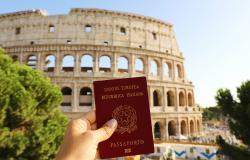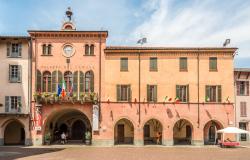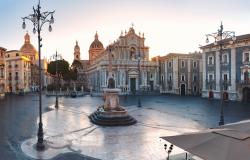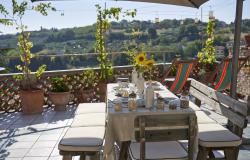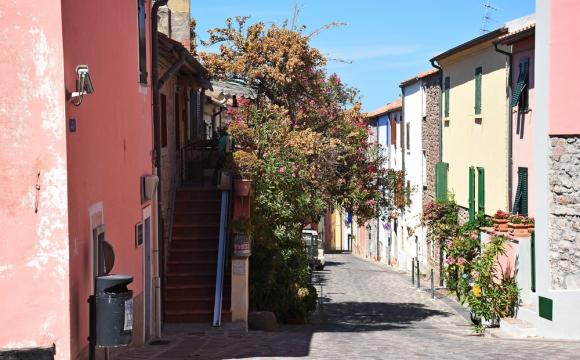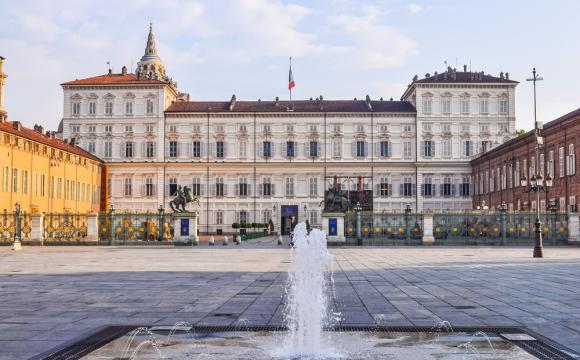Carol King explains what constitutes Italians’ most important ritual of the year – and it’s not a religious one.
When September arrives in Italy Italian women look ahead to a vital ritual with trepidation. As the days wear on into October anxiety mounts as the ritual becomes even more pressing if it hasn’t taken place already. It becomes an equally important topic of discussion as women discuss what is the precise moment to undertake the most important ritual in Italy: the ‘cambio di stagione’ (change of season).
I know the arrival of autumn in Britain provokes an equal amount of conversation. People comment on the change in the colour of the leaves from green to golden yellow and rusty red, what evening class they will take, when conkers start falling from trees and which shop is selling Christmas cards already. The change in season makes for all kinds of chatter as people begin to lament that the nights are drawing in and begin to dream of a winter holiday in the sun.

But in Italy if you mention the ‘cambio di stagione’ it has an entirely different meaning. This is the onerous task of transforming your wardrobe from summer to winter clothing. In Britain, depending on how large your wardrobe is, it may not take place at all. In British wardrobes there are thick woolly jumpers, cotton sweaters and – the most versatile items of all – various cardigans, long and short, that can cover up a host of sins and are worn with T-shirts, blouses and dresses. Why turf out your wardrobe when what you wear changes little from winter to spring or summer to autumn? A wardrobe consisting of clothes to be worn in layers and every sort of jeans is the British woman’s friend all year round.
Yet in Italy life is quite the opposite. Hot summers demand colourful dresses with matching wraps for the evening and high-heeled sandals. Life at the beach, particularly during the Ferragosto August holiday, means flat sandals, flip-flops, hats, sunglasses, bikinis, beach wraps, beach bags and beach towels. There are multiple items of each, and every item is selected carefully to ensure the owner can assemble a range of co-ordinated ensembles selected from a happy rainbow of colours. Of course, no Italian woman worth her salt would go out without matching jewellery, even on the beach, and long dangling necklaces worn over a beach wrap and underlying swimwear are essential when having lunch ‘al fresco’. Plus various hair clips are used to sweep up any silken tresses that could become wayward on a windy day or get wet during a knee-high stroll in the sea that has a lot in common with the ‘passeggiata’ (evening stroll).

Come the Italian autumn, skirts and dresses disappear to give way to jeans and trousers, sandals to boots and wraps to coats (furs come out after St Lucy’s day in mid-December). The colour palette seen along the ‘corso’ (high street) changes too. Bright oranges, reds, greens and yellows fade away to be replaced with black, brown and grey. The change is dramatic and occurs mid-September when summer is officially over. This is when Italian beaches become deserted as they are abandoned to tourists from colder climes who are sufficiently brave to sit under a parasol and take a dip in the sea.
Meanwhile Italians are spending their time deciding when to carry out the ‘cambio di stagione’. It’s no small task because items are washed, pressed and laid away. Autumnal clothing is taken out from mothballs and aired. Boots and shoes are polished, and taken to cobblers for repairs. Outfits and combinations are contemplated anew to keep pace with changing fashion. Such is the immensity of the ‘cambio di stagione’ it’s thought about with some dread. Partly because it’s waving goodbye to summer and partly because of the time it takes. Will you get it all done in a weekend? Do you need take a day off work?

There’s also the question of where, exactly, do you put all your clothes? My seasonal wardrobe moves from various suitcases into chests of drawers, cupboards and wardrobes as I transform myself from head to toe. Shorts and strappy tops are packed away as I unearth scarves and gloves I’d forgotten I knew existed.
In Britain being a well-turned woman is cheaper too. I could buy a summer dress and it would last a couple of decades as I got to wear it once a year unless I went abroad to somewhere warm on an annual holiday. In Italy in the summer I need so many changes of clothing a day to cope with the heat. I hunt at the sales to increase the number of dresses I have at my disposal, and then there’s the necessary accessories to be purchased. And of course there is the issue of beachwear, informal summer daywear, and elegant outfits for summer evenings. In England I could wear the same outfit all day as long as I was armed with an umbrella. All in all, life is wonderfully tough being a woman in Italy, particularly during the days of the ‘cambio di stagione’.


